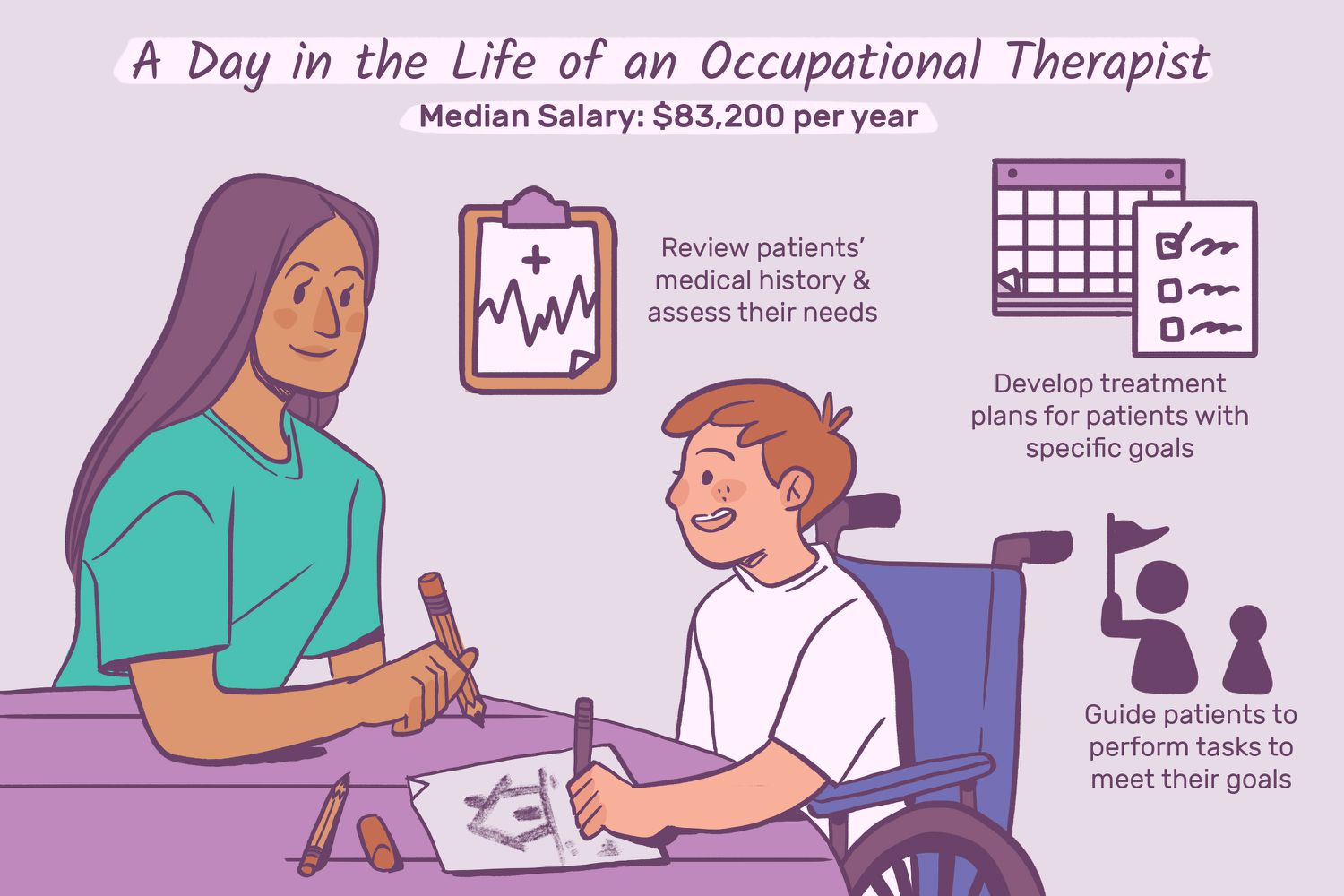Navigating a Career in Occupational Therapy
Occupational therapy (OT) is a dynamic and rewarding healthcare profession that focuses on helping individuals of all ages participate in the activities they need or want to do in their daily lives. Whether it’s assisting a child with autism to engage in school activities or helping an elderly person recover from a stroke to regain independence, OTs play a crucial role in enhancing quality of life. This article explores the steps to embark on a career in occupational therapy, the skills required, and the diverse opportunities within the field.
What Is Occupational Therapy?
Occupational therapy is a client-centered health profession that enables individuals to achieve independence and participate fully in daily activities, known as “occupations.” These occupations encompass a wide range of activities, including self-care, work, education, leisure, and social participation. OTs assess and address physical, cognitive, and emotional challenges that may hinder an individual’s ability to perform these tasks effectively.

Steps to Become an Occupational Therapist
1. Obtain a Relevant Undergraduate Degree
While specific requirements may vary by country, aspiring OTs typically begin by earning a bachelor’s degree in a related field such as health sciences, psychology, or biology. This foundational education provides essential knowledge in anatomy, physiology, and human development, which are crucial for understanding the complexities of human function and behavior.
2. Pursue a Master’s or Doctoral Degree in Occupational Therapy
In many regions, a master’s degree in occupational therapy is required to practice as an OT. These programs offer specialized training in areas such as therapeutic techniques, assessment methods, and clinical practice. Some institutions also offer doctoral programs for those interested in advanced clinical practice or research opportunities.
3. Complete Supervised Fieldwork
Fieldwork placements are an integral component of OT education. These supervised experiences allow students to apply theoretical knowledge in real-world settings, working with diverse populations and addressing various conditions. Fieldwork helps develop practical skills and professional competence essential for independent practice.
4. Obtain Licensure and Certification
After completing the necessary educational and fieldwork requirements, aspiring OTs must pass a national or regional certification examination. For instance, in the United States, the National Board for Certification in Occupational Therapy (NBCOT) exam is required. Additionally, licensure requirements vary by jurisdiction, so it’s important to check with local regulatory bodies for specific criteria.
5. Engage in Continuing Education
Occupational therapy is an evolving field, and staying current with the latest research, techniques, and best practices is essential. Many regions require OTs to participate in continuing education to maintain licensure. This commitment to lifelong learning ensures that practitioners provide the highest quality care to their clients.
Essential Skills for Occupational Therapists
Successful OTs possess a combination of technical knowledge and interpersonal skills that enable them to work effectively with clients and multidisciplinary teams. Key skills include:
Communication Skills: The ability to convey information clearly and listen actively is vital for understanding client needs and collaborating with other healthcare professionals.
Problem-Solving Abilities: OTs must develop creative solutions to help clients overcome barriers to participation in daily activities.
Empathy and Compassion: Understanding and addressing the emotional aspects of a client’s challenges fosters trust and promotes therapeutic relationships.
Organizational Skills: Managing caseloads, documentation, and treatment plans requires strong organizational abilities.
Adaptability: The capacity to adjust interventions based on individual client needs and changing circumstances is crucial in diverse clinical settings.
Work Environments for Occupational Therapists
Occupational therapists have the flexibility to work in various settings, each offering unique challenges and rewards. Common work environments include:
Hospitals and Rehabilitation Centers: OTs assist patients recovering from surgeries, injuries, or illnesses to regain functional independence.
Schools and Educational Institutions: Working with children to address developmental delays, learning disabilities, and behavioral challenges.
Mental Health Facilities: Supporting individuals with mental health conditions to develop coping strategies and life skills.
Private Practice: Offering specialized services to clients in a personalized setting.
Community Health Organizations: Providing outreach and support to underserved populations.
Each setting allows OTs to apply their expertise in different ways, contributing to the diverse nature of the profession.
Career Outlook and Opportunities
The demand for occupational therapists is projected to grow significantly in the coming years. According to the U.S. Bureau of Labor Statistics, employment of occupational therapists is expected to increase by 11% from 2023 to 2033, much faster than the average for all occupations. This growth is driven by an aging population, increased awareness of the benefits of OT, and expanded access to healthcare services.
In Australia, the average salary for occupational therapists ranges from $85,000 to $100,000 annually, with opportunities for advancement in clinical, administrative, and academic roles. The profession offers a high degree of job satisfaction, with many OTs reporting a strong sense of fulfillment from helping clients achieve meaningful goals.


